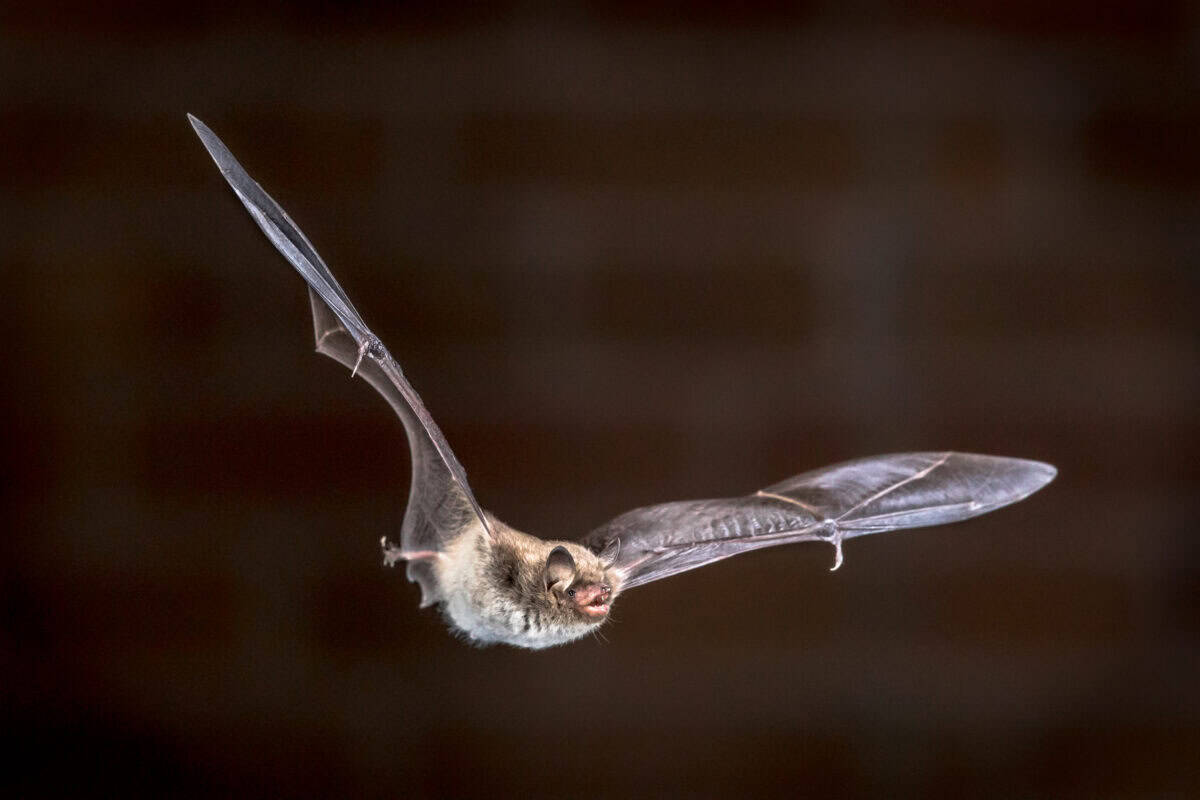Throughout the animal kingdom, predators have evolved remarkable hunting strategies to capture prey efficiently. While many rely on speed, strength, or venom, an elite group has mastered the art of acoustic warfare – using sound as a weapon to incapacitate prey. These sound hunters employ specialized biological equipment to generate powerful sonic blasts that can stun, disorient, or even kill their targets. From the depths of the ocean to dense forests, these acoustic predators represent one of nature’s most fascinating adaptations. Let’s explore ten remarkable animals that have harnessed the power of sound as a lethal hunting tool.
Pistol Shrimp The Underwater Sonic Gunslinger

The pistol shrimp (family Alpheidae) possesses perhaps the most impressive sound-based hunting mechanism in the animal kingdom. Despite measuring just a few centimeters in length, this tiny crustacean packs a literally stunning punch. One of its claws has evolved into a specialized sonic weapon that snaps shut with such tremendous speed – up to 97 km/h (60 mph) – that it creates a cavitation bubble. When this bubble collapses, it generates a sound reaching 218 decibels, louder than a gunshot and powerful enough to momentarily stun or kill small fish and other prey. The collapsing bubble also produces a brief flash of light and temperatures nearly as hot as the sun’s surface (around 4,700°C or 8,500°F). This sonic blast is so powerful that colonies of pistol shrimp can interfere with sonar and underwater communication equipment.
Sperm Whale Deep-Sea Sonic Stunner

The sperm whale (Physeter macrocephalus), the largest toothed predator on Earth, employs its massive head as a biological sonic weapon. Up to one-third of the whale’s body length is dedicated to its distinctive block-shaped head, which houses the spermaceti organ and a complex system of air sacs and tissues that produce the loudest biological sound ever recorded. These whales generate focused clicks exceeding 230 decibels – powerful enough to potentially stun giant squid and other deep-sea prey. Scientific evidence suggests these directional sonic blasts can temporarily paralyze prey, allowing the whale to more easily capture elusive deep-sea cephalopods. The clicks are so powerful that they can be felt as physical vibrations in the water by human divers nearby. This sophisticated bio-sonar not only helps sperm whales navigate the lightless depths but functions as a formidable hunting tool at extreme ocean depths of up to 3,000 meters (9,800 feet).
Bottlenose Dolphin Precision Sonic Hunters

Bottlenose dolphins (Tursiops truncatus) have perfected a sophisticated form of bio-sonar for hunting. While all dolphins use echolocation to navigate and find prey, bottlenose dolphins have been observed employing specialized high-intensity sound beams that can actually stun fish. They produce powerful directional clicks that reach up to 220 decibels, which they can focus with remarkable precision. Research has documented bottlenose dolphins emitting these intense sound pulses directly at fish schools, causing the fish to become momentarily immobilized or disoriented. This sonic stunning technique allows the dolphins to more easily pick off individual prey from the confused group. What makes this ability even more impressive is that dolphins can modulate the frequency and intensity of their sonic blasts depending on their target and hunting environment, demonstrating a level of acoustic control that few other animals possess.
Snapping Shrimp Collective Sonic Warfare

Snapping shrimp (genus Alpheus), close relatives of pistol shrimp, have taken sonic hunting to a social level. While individual snapping shrimp can stun prey with their cavitation-bubble sounds reaching 190 decibels, what’s truly remarkable is their collective behavior. These shrimp often live in large colonies of thousands of individuals, and when they snap their specialized claws in concert, they create a continuous crackling underwater sound barrier. Marine biologists have documented how these collective sound barrages can stun entire schools of small fish that venture too close to their colonies. The constant barrage of snaps creates a virtual acoustic minefield that disorients prey, making them easier targets for the colony. This cooperative sonic hunting strategy demonstrates a fascinating evolutionary adaptation that maximizes hunting efficiency for relatively small predators. The continuous crackling noise produced by these colonies is so prominent that it was initially mistaken for mechanical or geological activity by early sonar operators.
Concave-eared Torrent Frog Ultrasonic Predator

The concave-eared torrent frog (Odorrana tormota) from China represents a remarkable case of evolutionary adaptation for acoustic hunting. Unlike most frogs that produce sounds within the human hearing range, these specialized amphibians can generate and detect ultrasonic calls above 20 kHz – well beyond human hearing capabilities. Research published in Nature revealed that these frogs use their ultrasonic abilities not just for communication but for hunting insects in the noisy environments of rushing streams. Their concave ear structure allows them to precisely locate prey using high-frequency echoes. When they detect flying insects, they can emit targeted ultrasonic pulses that temporarily stun or disorient their prey, causing them to fall into the water where the frogs can easily capture them. This sophisticated ultrasonic hunting system represents convergent evolution with bats, developing independently to solve similar predatory challenges in a noisy environment.
Tiger Pistol Shrimp Specialized Sonic Hunter

The tiger pistol shrimp (Alpheus bellulus) has refined the standard pistol shrimp sonic arsenal with specialized hunting techniques. While most pistol shrimp create sonic bubbles somewhat indiscriminately, tiger pistol shrimp have been observed taking careful aim with their snap-generating claw, essentially creating a directed sonic weapon. Their distinctive striped pattern provides camouflage as they lie in wait for passing prey. When a potential meal comes within range, they fire their sonic blast with remarkable precision, creating a focused shock wave that can stun fish up to several centimeters away. Marine biologists studying these shrimp have documented how they can calibrate the intensity of their snap based on prey size, using just enough sonic force to immobilize without wasting energy. This precise control over their sonic weapon makes tiger pistol shrimp among the most efficient acoustic hunters in marine environments, achieving an estimated 80% success rate when hunting small fish and crustaceans.
Killer Whales Tactical Sonic Disorientation

Killer whales or orcas (Orcinus orca) employ sophisticated acoustic strategies when hunting. Beyond their standard echolocation, researchers have observed orcas using powerful, directed sound pulses to disorient and effectively stun prey. When hunting herring in Norwegian fjords, orcas slap their tails to produce a powerful pressure wave, but they also emit focused sonic blasts that temporarily immobilize the fish. Even more dramatic is their technique when hunting rays – they position themselves directly above the ray and emit an intense burst of sound that appears to scramble the ray’s sensory systems, rendering it momentarily paralyzed. Perhaps most impressive is the “sonic stunning” technique documented among transient orcas hunting marine mammals. These orcas can produce intense, low-frequency calls that disorient seals and sea lions by disrupting their vestibular system. This causes the prey to become disoriented and unable to swim effectively, making them vulnerable to attack. These acoustic hunting techniques showcase the remarkable intelligence and adaptability of these apex marine predators.
Bat-like Planthopper Vibrational Predator

The bat-like planthopper (Laternaria candelaria) demonstrates that sonic hunting isn’t limited to large animals or aquatic environments. These unusual insects use specialized structures on their abdomen to generate vibrational pulses that travel through plant tissues. Unlike most planthoppers that use vibrations primarily for communication, this species has evolved to use vibrations as a hunting tool. They produce precisely calibrated vibrations that travel through plant stems and leaves to localize and stun smaller insects like aphids. Research published in the Journal of Experimental Biology demonstrated that these vibrations temporarily paralyze the nervous systems of their prey, preventing escape. What makes this hunting technique particularly effective is that the vibrations are imperceptible to many predators that might otherwise target the planthopper itself, allowing them to hunt stealthily. This represents one of the few documented cases of vibrational stunning in the insect world and showcases how sound-based hunting has evolved independently across vastly different animal groups.
Electric Eel Bioelectric Sonic Stunner

While primarily known for their electrical discharges, research published in Science in 2019 revealed that electric eels (Electrophorus electricus) also utilize a sonic component in their hunting strategy. When these freshwater predators emit their powerful electrical charge of up to 860 volts, the rapid muscular contractions create a distinctive pressure wave – essentially a sonic boom in water. High-speed camera studies have shown that this pressure wave can stun prey even when physical contact hasn’t been made. The electrical discharge creates rapid gas bubble formation and collapse around the eel’s body, generating a sound pulse that can reach up to 140 decibels underwater. This sonic component provides a double-stunning mechanism – prey animals are immobilized by both electrical and sonic forces simultaneously. This discovery explains how electric eels can effectively hunt in murky Amazonian waters where visibility is near zero and electrical currents might be partially dissipated. The combination of bioelectricity and sonic forces makes electric eels among the most uniquely equipped predators in freshwater ecosystems.
Mantis Shrimp Percussive Hunters

Mantis shrimp (order Stomatopoda) are renowned for their specialized hunting appendages, but less known is their use of sound as a stunning mechanism. Particularly in the “smasher” variety of mantis shrimp, the lightning-fast strike of their club-like appendages creates a cavitation bubble similar to that of pistol shrimp, but with added mechanical force. These strikes, among the fastest movements in the animal kingdom at up to 23 meters per second, create a shockwave that travels ahead of the physical impact. High-speed photography has revealed that this shockwave temporarily stuns prey before physical contact occurs. The cavitation bubble collapse following impact produces a sound pulse reaching up to 200 decibels, providing a secondary stunning mechanism. For smaller prey, this sonic component alone can be sufficient to cause disorientation or death. Some species of mantis shrimp have refined this technique to such a degree that they can calibrate their strike force precisely, using just enough sonic and physical force to stun but not destroy prey they wish to capture intact. This sophisticated hunting mechanism showcases yet another example of how sound has been weaponized through evolutionary processes.
European Pond Bat Acoustic Fisherman

The European pond bat (Myotis dasycneme) has developed a specialized form of echolocation that serves as both a detection system and a stunning mechanism. Unlike most bats that use echolocation primarily to locate flying insects, pond bats emit powerful, low-frequency sound pulses directed at the water’s surface to detect and capture fish. Research published in the Journal of Experimental Biology revealed that these bats can produce focused sound beams exceeding 120 decibels that not only locate fish but temporarily disrupt their swim bladder function. The intense sound pulses cause momentary disorientation in fish swimming near the water surface, making them easier targets as the bats swoop down with their specialized large feet and claws. What makes this hunting strategy particularly remarkable is its precision – the bats can detect the subtle movements of a fish’s fin breaking the water surface in complete darkness and direct their sonic blast with pinpoint accuracy. This specialized acoustic hunting technique allows pond bats to exploit a food resource that most other bat species cannot access, demonstrating yet another evolutionary path to sonic hunting.
Conclusion: The Evolutionary Significance of Sonic Hunting

The development of sound as a hunting weapon represents one of nature’s most fascinating examples of convergent evolution. From tiny shrimp to massive whales, unrelated species across vastly different environments have independently evolved mechanisms to harness sound for predation. This phenomenon provides valuable insights into how evolutionary pressures can produce similar solutions to the challenge of efficient hunting. What makes sonic hunting particularly notable is that it often allows relatively small predators to capture prey that would otherwise be too fast or dangerous to approach physically. For marine predators especially, sound travels five times faster underwater than in air, making it an ideal medium for quickly targeting prey in low-visibility conditions. The variety of mechanisms that have evolved – from cavitation bubbles to concentrated sound beams – demonstrates nature’s remarkable capacity for innovation. Perhaps most intriguing is how these sonic hunters continue to inspire biomimetic technologies, from improved medical ultrasound to underwater communication systems, showing that these evolutionary adaptations have relevance beyond their natural contexts and into human technological development.
- 13 Reasons Why Guinea Pigs Make Great Starter Pets - August 10, 2025
- The Surprising State That Now Home to More Bald Eagles Than Alaska - August 10, 2025
- What Happens When a Hurricane Meets a Wildfire? Experts Weigh In - August 10, 2025

